

GARDEN GNOMES
This is the story of a trip to Scotland that I took with Holly (my daughter) a couple of years ago. Because of its length, I will post it in three parts. Hope you enjoy it.
Spring Break at 60 is a little different from Spring Break at18. No wild parties for me and my 23-year-old daughter, Holly. No sun burns (although Holly did manage a sprinkle of freckles across her nose). No bikinis or hot, sandy beaches. Instead we flew to cool, rainy Scotland to complete research for a novel Holly is writing.
Undaunted by the thought of the long trans-Atlantic flight in Steerage, I mean, Economy, I also felt pretty comfortable with spending every night in a different B & B (Bed and Breakfast). But I dreaded traveling from one historical site to another, once I learned that we could not travel by train, cab, or bus. I would have to drive. In Scotland, where they drive on the wrong side of the street. Where the roads are sometimes narrow as the eye of a needle. And then people park their cars there. On both sides. Then you meet traffic!
We rented a clean little VW Golf diesel with an automatic transmission. We also rented a "NeverLost" GPS system, which worked well most of the time. Like computer driving maps, sometimes the GPS gave incorrect directions and Holly, our navigator, looked at the electronic map and argued with the "lady" who voiced the directions.
"No! That's not right. We need to turn LEFT, NOT right at that intersection!" Holly shouted at the machine.
"Are you sure?" I cried frantically in a high-pitched voice. "Quick, we're at the intersection, which way, which way?"
A couple of people blew their horns when I abruptly turned left from the right-hand lane, but I think Edinburgh drivers are just naturally rude.
Holly sometimes screamed at the GPS and called the "lady" names, but the "lady," with a cool, refined British accent remained calm, even when we took the 2nd exit in the "roundabout" instead of the 3rd. After an error, a silence ensued and then the voice intoned, "Calculating your route" and tried to get us back on track. It did seem, however (and it might have been our imagination) that, as days passed and mistakes piled up, the silence became chillier and "Calculating your route" was preceded by a just-audible sigh.
But I digress.
After a hair-raising drive from Edinburgh to Dumbarton (I kept scrubbing the "tyres" against the "kerb," trying to avoid big trucks edging into my miniscule lane), we arrived safely at our B & B. From there we walked from our B & B to Dumbarton Castle, which is on Dumbarton Rock.
Dumbarton Rock, the core of an extinct volcano, stands where the River Leven joins the River Clyde. Its recorded history goes back about 1500 years, making it the oldest recorded stronghold in Scotland. We climbed both crests of the Rock: the White Tower Crag at 240 feet above sea level, and the slightly lower Beak.
I toiled up the 557 steps of the Tower, then staggered up the rest of the grassy path to the top of the hill. I admit that I had to stop and rest once or twice. I pretended to be enthralled with the magnificent view, not wanting Holly to hear my gasping or see my heart jump right out of my chest.
The view from the peaks proved worthy of the arduous climb. This ancient volcanic cone thrusts up in splendid isolation, soaring above the low-lying lands along the two rivers as they conjoin, forming the broad Firth of Clyde. What a perfect location for forts and, later, castles! On a peninsula, almost surrounded by water, with the only land approach blocked by precipitous basalt slopes, the peaks must have been nearly impervious to attacks
On top the wind gusted and whirled around Holly, blowing her long chestnut hair across her face and whipping it away again, while she gazed and dreamed, imagining the wooden fort and village which existed in the Dark Ages.
On Wednesday, the route to Argyle followed a winding, hilly highway -- very narrow, but with beautiful scenery. As we traveled, vistas changed with the quality of light. Mists and clouds thickening and thinning hid and exposed hills and changed our perception of the scene. Long peninsulas thrust far into the sea and fjords drove deeply into mountains while waterfalls gushed from the heights and rivers danced and sparkled.
When we arrived, we put on our rain boots and wore our raincoats over padded vests. Holly also had a jacket under her raincoat to ward off the cold. Rain drizzled, but let up as we set out into the courntryside.
We found Dunadd Fort - a hill with a little rock-work left from 1000 years or so ago. Dunadd was the royal center of Dal Riata, the kingdom of the Scots. We slogged up the hill which was steep and slippery - almost continual rain keeps the area green, but muddy. Both of us were buffeted by the wind and my umbrella blew inside-out, so I closed it and faced the "Scottish Mist" (drizzle and fog) unprotected.
What a wild, Scottish view, with lowering gray skies, rain, wind, and fog. Once again, it is clear why the forts were always a hard climb - we could see for miles. On clear days, early warning of approaching enemies was assured. Tree-lined streams cut through acres of pastures. Sheep grazed peacefully against a backdrop of hills and ridges. The rugged tor towered over the plain. Huge stones alternated with tough grass on the sides of the hill.
Holly photographed the "Foot," a footprint cut into the rock where in olden days the new king placed his foot during his coronation vows. To the kings of Dal Riata, this footprint was a symbol of the king's marriage to the land, his dominion and dependence on the land for the support and nurture of his people. We also found the "Cup" a basin carved into the rock, possibly used for libations (drink offerings to gods).
Surprised when I saw the pictures that Holly had taken at this site, I wondered, "Who is the TROLL in the long raincoat, red gloves, and pink boots? Could that be me? I look like I should be under a bridge, demanding "Who is tripping across my bridge?" of Billy Goat Gruff! Or, really, I look more like a garden gnome, with a tiny head atop a gradually widening body covered by an ankle-length raincoat supported by the little pink boots.










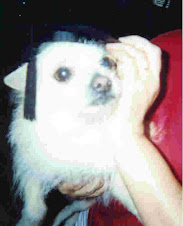

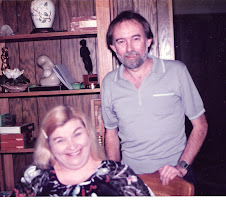
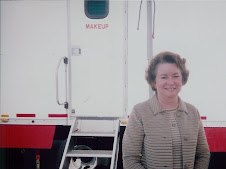

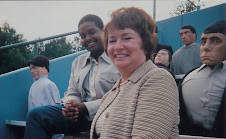






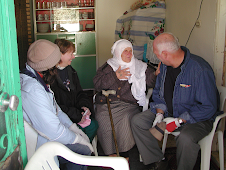
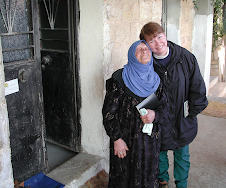


No comments:
Post a Comment